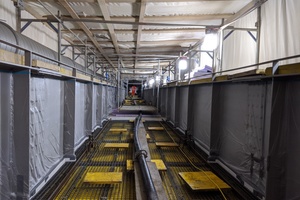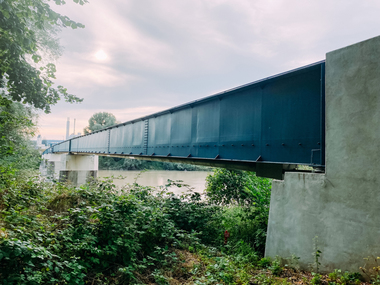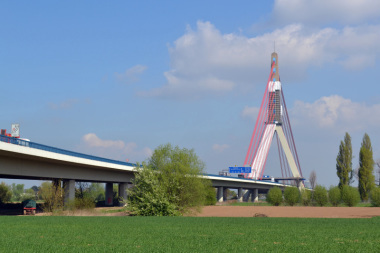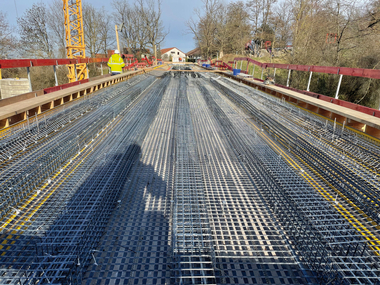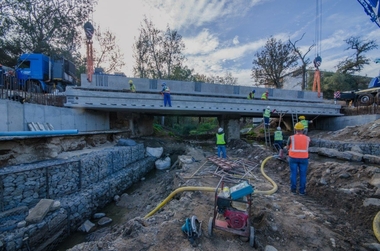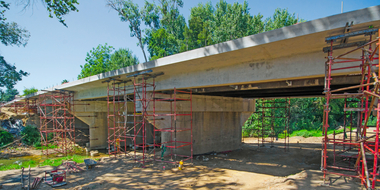Rehabilitation of a 200-m Rhine bridge with
carbon concrete
In 2020, a 200-m bridge, constructed in 1934 over the Rhine River near the city of Albbruck in Germany, was rehabilitated with carbon concrete. In the longitudinal direction of the pedestrian and cyclist bridge, two steel beams span the river in a continuous system. In addition to the two abutments, one on the German and one on the Swiss side, two pillars that provide the foundation in the Rhine River take up vertical loads.
Load transmission from the walkway onto the steel beams takes place over a concrete slab that is ridgidly connected to the beams. This connection is necessary in order to favorably influence global stiffness and oscillation behavior. A composite action of beam and slab was not considered in the structural design. Due to heavy damage caused by corrosion, it was necessary to completely rehabilitate the 6 cm concrete walkway and its overlay of mastic asphalt. 6 cm thick, and seal it with asphaltic mastic. The nearly 90-year-old slab had to be dismantled and replaced by a carbon-concrete slab 7 cm thick. Rehabilitation with steel-reinforced concrete had not been possible here because the existing steel structure would not have been able to support the loads of a reinforced-concrete slab as stipulated in the current EC2. The reason here is that the required concrete cover would have needed a thickness of 12 cm to make it resistant to the the freeze-thaw and de-icing salt exposition.
To obtain individual approval, experimental and theoretical investigations were carried out at RWTH Aachen University. As part of the investigation, the normal restraint forces resulting from shrinkage and temperature differences due to the force-locked connection were considered.
The particularity of this rehabilitation is the cast-in-situ construction. For previously realized bridges made of carbon concrete, precast elements were used. The completed rehabilitation concept is designed to double the service life of the bridge once again. In this way, the bridge will remain a friendly link between both countries.

